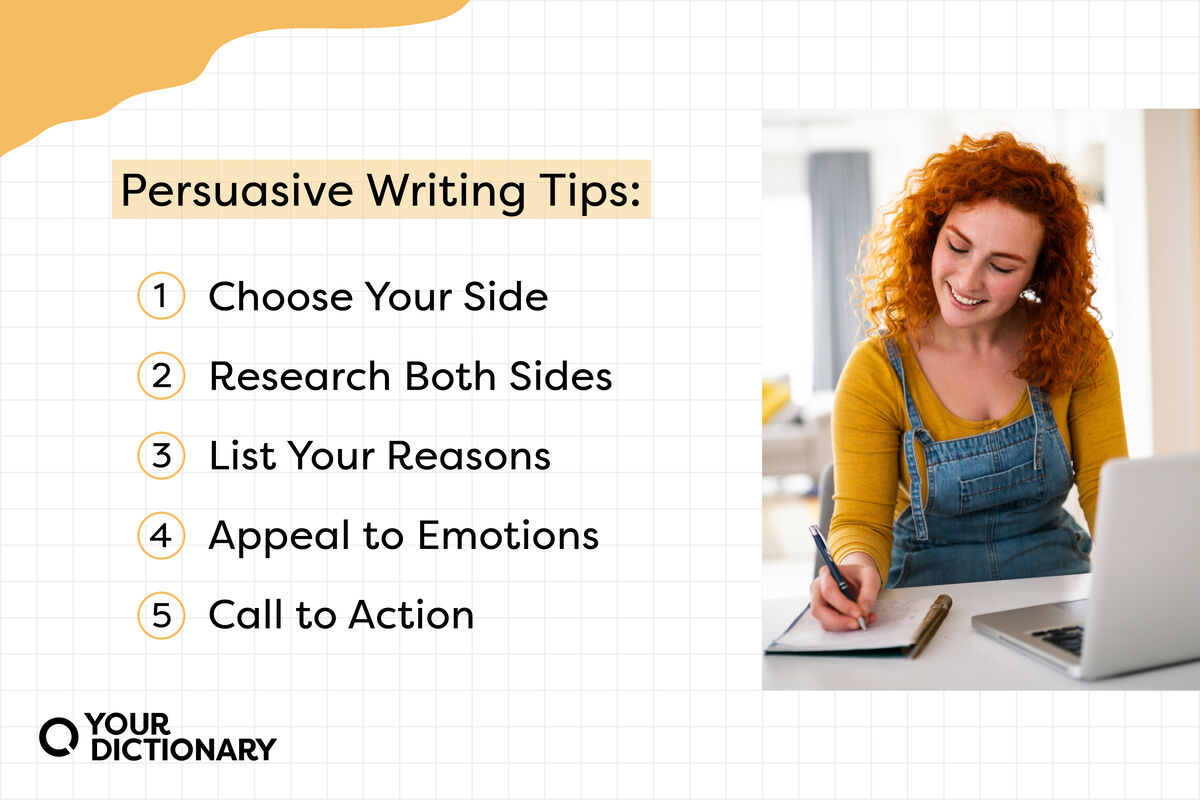
Do you have a strong opinion about a topic? If so, now's the time to take that opinion, bolster it, and convince others to "come on your side." Let's explore some tips for persuasive essay writing made easy, including a persuasive essay outline.
What Is a Persuasive Essay?
A persuasive essay has one main goal: to persuade the audience of a certain viewpoint. Like a sales pitch, your essay is selling your point of view. An effective persuasive essay appeals to the reader’s emotions and feelings to convince them that your side is correct. They require some evidence, but the primary evidence for your position is your opinion and personal experience.
Persuasive vs. Argumentative
While persuasive essays focus on one point of view, argumentative essays acknowledge differing opinions and perspectives. Argumentative essays use logic and rhetorical devices to convince an audience to consider the author’s argument. They require more facts and evidence than persuasive essays to be valid arguments.
An example of a persuasive writing prompt may be, “What is the best dessert?” However, an argumentative essay may pose the question, “Should the school have more varieties of dessert?” Each author would collect different types of evidence and take a different approach to writing their essay.
Steps to Writing a Persuasive Essay
Although you may feel passionate about your topic, you’ll need to use writing skills to fully convince your readers to believe you. With five strong paragraphs, you can formulate a strong persuasive essay.
Choose Your Side
Before you begin, it's important to know where you stand on the issue. Choose your side and hold firmly to it. Unlike an argument essay which requires a look at counterarguments, persuasive essays allow you to stick to your own opinion. With a focused lens, you'll be able to research your topic more thoroughly.
Research Thoroughly
A good persuasive essay is going to present compelling facts and statistics. The goal is to move the pendulum so others choose your side, too. You can also research and present moving narratives that will make readers stop, think, and consider your viewpoint.
List Your Reasons
Even though a persuasive essay doesn’t require hard evidence, you will need to list reasons for your opinion. The more reasons you list, the more convincing your essay will be. Be sure to make your reasons relatable to a variety of readers.
Appeal to Emotions
Are you trying to persuade an audience by making them worried? Should they feel angry after reading your essay, or sad, or relieved? Appealing to your readers’ emotions is an important part of persuading them to agree with you. A bland essay with a neutral tone isn’t going to be as effective as a fiery statement about what you believe.
Call to Action
What do you want readers to do after reading your essay? Think of what action they can take once they are convinced of your point. These actions can range from letters to the school board, signing petitions, donating to worthy causes, or speaking out on the same issue.
Outlining Your Essay
No matter how compelling your point is, you’ll need to use writing skills as a tool to convince readers to your side. A well-organized, five-paragraph essay will present your argument much more effectively. The structure is simple:
- The Introduction – Your introductory paragraph needs to be your strongest paragraph. This is where you'll present your argument or recommendation, including your thesis statement. The last sentence should conclude the thought while transitioning into the next paragraph.
- The Body – The next three paragraphs should reinforce your initial viewpoint, thereby persuading the reader that your position is the best position possible. Each paragraph should present one reason for your opinion with evidence from your personal experience.
- The Conclusion – Your concluding paragraph should reiterate your thesis statement. Then, sum everything up and conclude the overall essay to drive the point home. Include your call to action here.
Once you’ve mastered this structure, feel free to add more body paragraphs as you see fit. But don’t overwhelm your reader with too many reasons. If you begin with a clear and precise thesis statement and fuse it with solid facts, you'll be well on your way to delivering a pitch-perfect persuasive essay.
Persuasive Essays Are Convincing
You can find a lot of persuasive essays in the realm of politics. Among political figures -- whether senators, congressional personnel, lobbyists, or presidential staff -- developing and using persuasive essays is quite common.
In order to write a concrete, persuasive essay, you'll need to do your homework on the topic. Familiarize yourself with both sides of the coin: your side and the opposing argument. Preemptively respond to possible counter-arguments from the other side. This will make for a much stronger essay. Don't shy away from a quick acknowledgment of the main point of contention.
Persuasive essays include substantial facts in support of the topic. Still, the main purpose is to convince the reader to agree with your position. Being aware of Aristotle's modes of persuasion will also help you craft an appropriate appeal to emotion, logic or credibility.
Change the World
You can change the world, or at least the perspective of a group of people, with a powerful persuasive essay. And, in truth, persuasive essays possess an element of informative essays. You'll certainly be educating the audience on an important topic.
Just remember, the main goal of a persuasive essay is to seduce the reader into agreeing with you. Encourage them to take a stand. If the time comes when you must take your cause from paper to the podium, check out these steps for writing a persuasive speech.